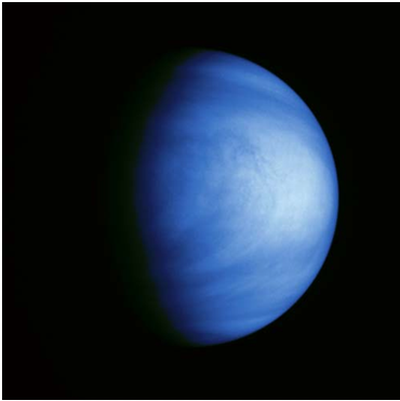10 December 2010

A Galileo spacecraft image of Venus, the second planet
Credit: NASA
The Japanese space agency JAXA has announced that its Venus-bound space probe, AKATSUKI, failed to enter orbit around Venus, on 7 December 2010. AKATSUKI, also known as Venus Climate Orbiter, was launched into space, on 20 May 2010, from the Tanegashima Space Center. JAXA declared that it will set up an investigation team, to study the cause and countermeasures. JAXA plans to attempt another Venus orbit insertion, when AKATSUKI flies by Venus again, in six years from now.
AKATSUKI is a small box-shaped spacecraft, measuring 1.6 × 1.6 × 1.25 m. It carries onboard six sophisticated scientific instruments, including five cameras and a radar device. The instruments will study the composition and heat emission of Venus’ atmosphere.
AKATSUKI is the first Japanese interplanetary mission, since the Mars-bound Nozomi spacecraft, which failed to enter Mars orbit, in 2003.
Venus is known as Earth’s Twin Planet, because it is similar to Earth in mass and size. However, Venus is a hostile planet, as its dense hot atmosphere consists mostly of carbon dioxide gas. On the surface of Venus, the minimum temperature is about 450 C, and the atmospheric pressure is over 90 times that of Earth. Venus is also our nearest planet. Its distance from Earth varies between approximately 40 million km and 250 million km.
References
JAXA
Wikipedia
Further Reading
Venus Fact Sheet
http://nssdc.gsfc.nasa.gov/planetary/factsheet/venusfact.html
Images of Venus
http://nssdc.gsfc.nasa.gov/photo_gallery/photogallery-venus.html
Aymen Mohamed Ibrahem
Senior Astronomy Specialist